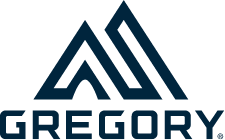It’s coming! Cold snaps in the morning, leaves are popping, and your mind is spinning about what old man winter is going to give us this season. While many of us are finishing up what days we have left to ride our bikes we can still prepare ourselves well for shredding the slopes.
In a previous post, we have talked about the importance of core strength and it’s application to leg strength. One of the elements that we can work to prep for ski season while making sure our joints are healthy and strong is unilateral work.
Simply put these are single leg or single arm movements.There are a number of reasons these can be beneficial for us. We are going to focus on one specifically and follow it up with movements you can do that may be less conventional but incredibly beneficial.
One of the primary benefits to doing single leg work in its application to our time on the hill is where your knee is tracking. Many of us have imbalances or tightness that causes improper knee tracking. Ideally, our knees should be tracking over our toes, regardless of where the are pointed. This applies to squatting, pressing, jumping, running…. you get the idea. Pretty much anything under the sun. The issue we see is many people have weakness in their glutes (butt cheeks), which makes it difficult for them to keep their knee tracking over their toe. When their knee dives inward this is poor position causing undue stress on our joints. When your joints aren’t stacked you’re asking tendons and ligaments to take on unnecessary stress.
Single leg work allows us the opportunity to focus on knee position. The weight we use is often much lighter if any since the movements can be more difficult. In any bodyweight or lightweight environment, you can have more awareness while moving. Once we develop the awareness, position and strength we can add in the weight. Another thing to note is that we are not talking about our knees staying behind your toes. If you have knee issues like tendonitis or arthritis this may be beneficial for you. With healthy knees and joints, it is acceptable for your knees to come over your toes as long as your heels stay on the ground and they track correctly. Think about the position you would be in running… or skiing. While skiing we are intentionally driving our knees forward to put pressure into our boots and turn the ski.
Here are a few movements you can do that don’t require much and have good bang for their buck!
Lunges:
These are the most common single leg movement and one that we can easily focus on position since you can watch your knees track. You can do these traditionally with walking forward, or try reverse lunges. Reverse lunges have you stepping back instead of walking forward. If you try the reverse lunge try keeping your stationary foot on a small plate or slightly raised up to challenge yourself with an increased range of motion.
Single Leg Box Step Ups:
Another great option where you can see your knee position. Try to choose a box that has your hip crease slightly below your knee. This will keep you honest with the range of motion that your hip is designed to move through. To start off you can use your non-working leg to drive off the floor with your toes. From there try pulling your toes off the ground and driving off the heel… way harder! If you’re a real ninja you can work from the top of the box down and try a single leg squat.
Sled Drags and Sled Pushes:
These are some of my favorite movements that we can use for single leg work. They can be done at varying distances, with varying loading, and provide a conditioning element for us as well. The push or drag is essentially us walking or running deepening on the loading. This is a GREAT way for us to focus on knees tracking properly, especially when the weight gets a bit heavier. We will be forced to maintain good position. The other benefit of these movements is they tend to be less rough on the joints. There is minimal or no impact. They are also “concentric” which means our muscles are contracting, not lengthening when we do the work. This eliminates much of the soreness that we see with other lifting or bodyweight movements but they still have the strength benefit.
Start adding these into your programming before the season starts. Keep on top of them during the season to maintain that strength. A good rule of thumb for the lunges or step-ups is 2-4 sets that accumulate a total of 20-50 repetitions. The sled drags or pushes can be as short as 50-100’ or as long as a mile!
Have fun with them and be well prepared to shred! For additional fitness-related stories, visit my page on skiutah.com.















